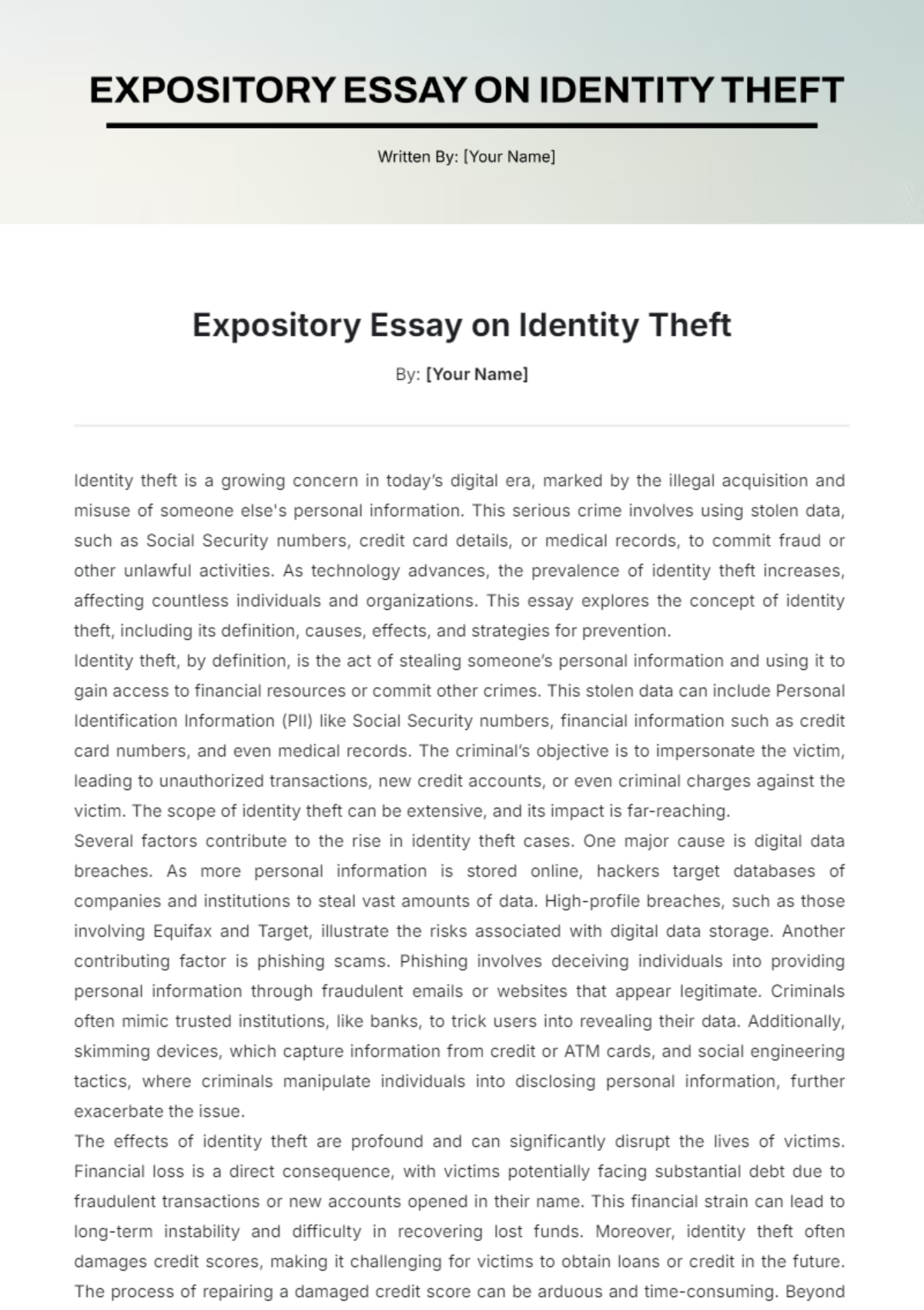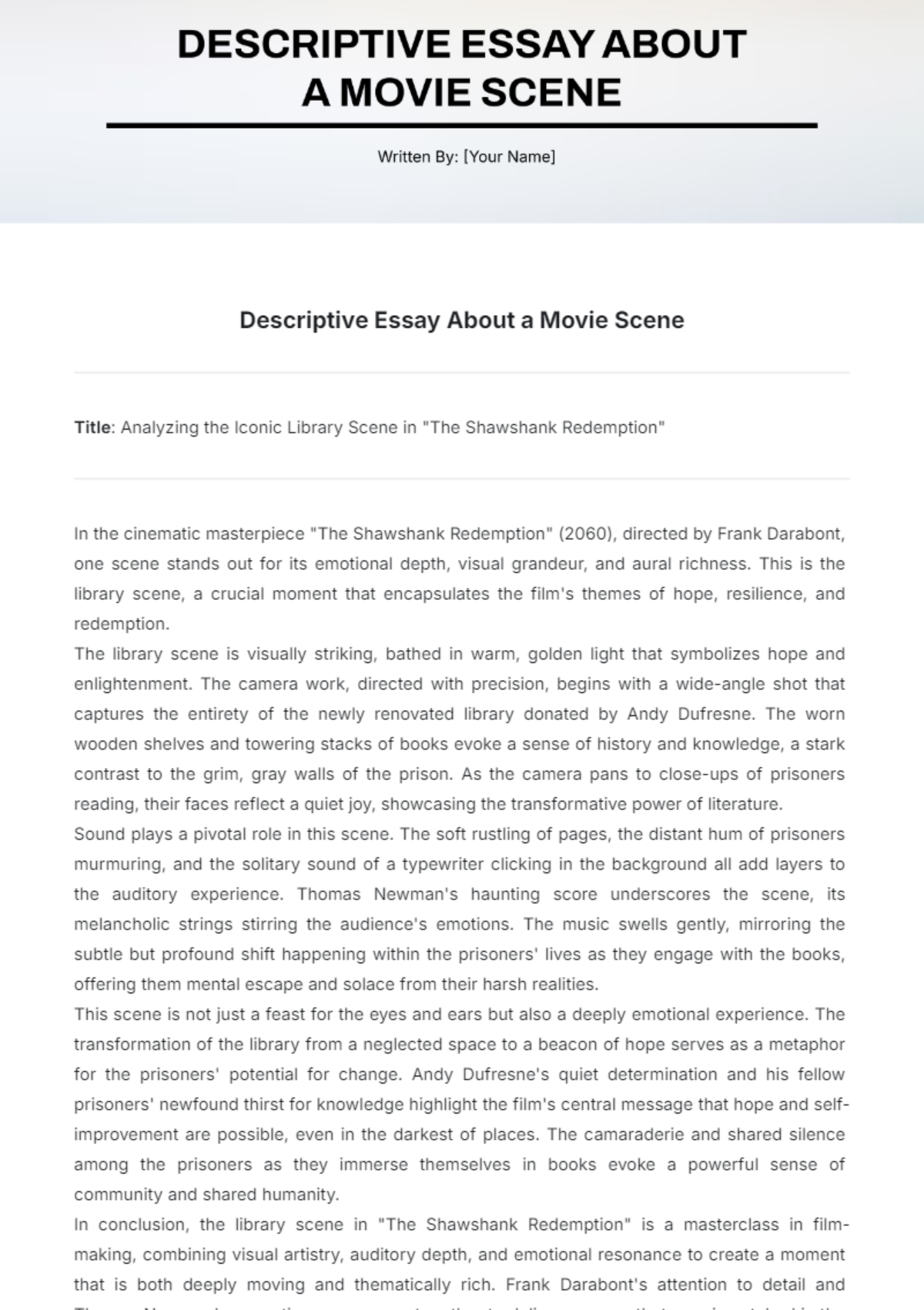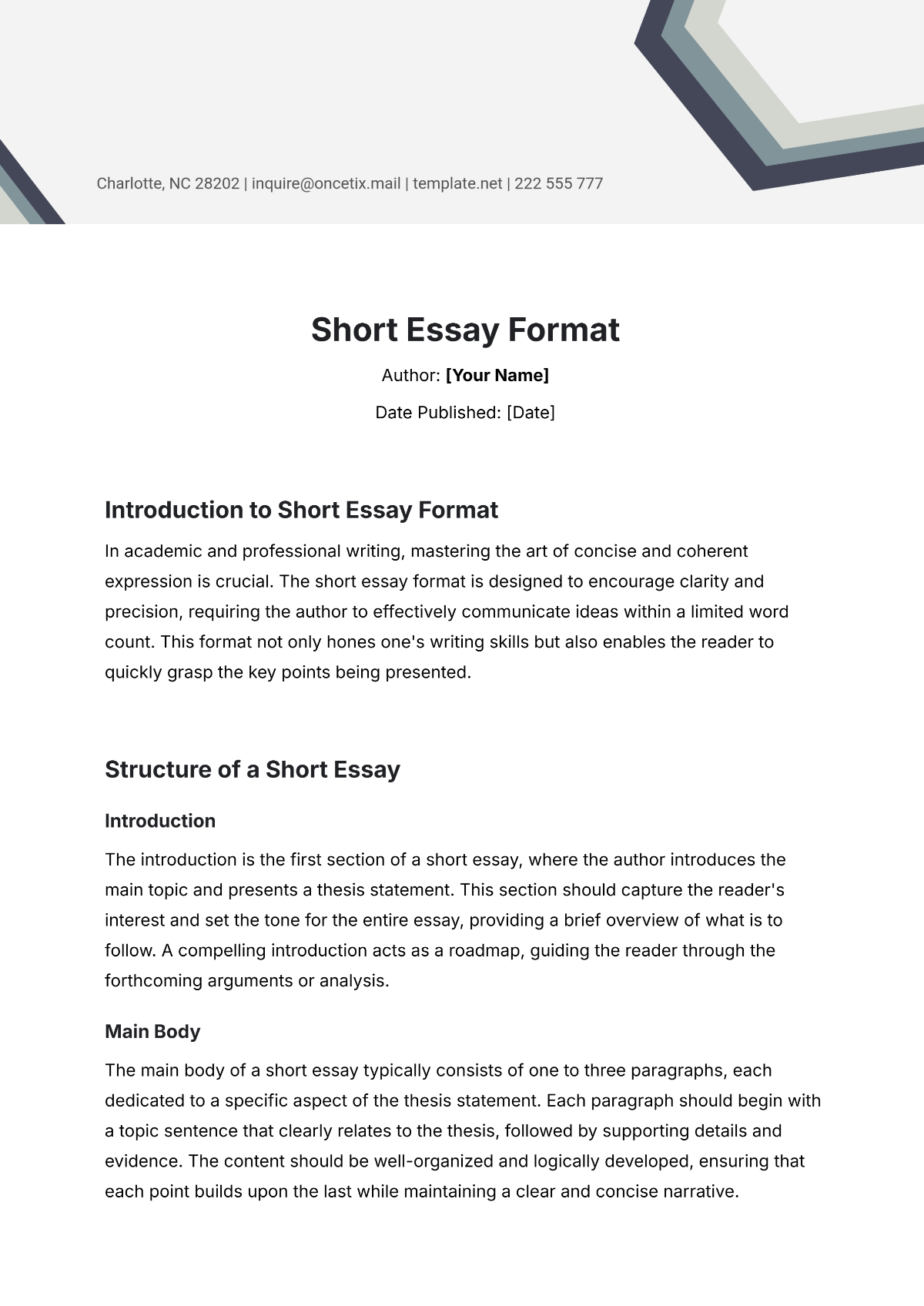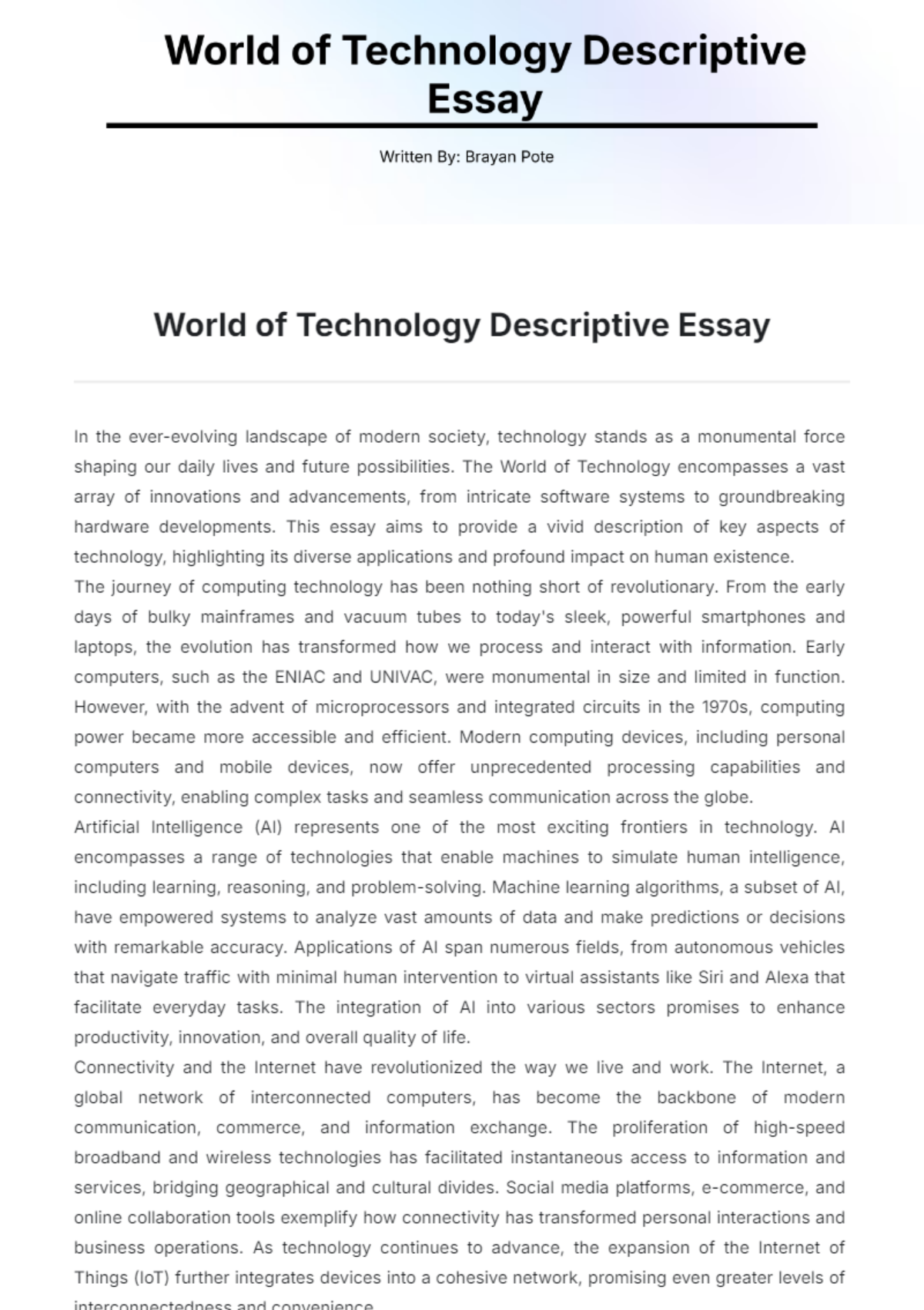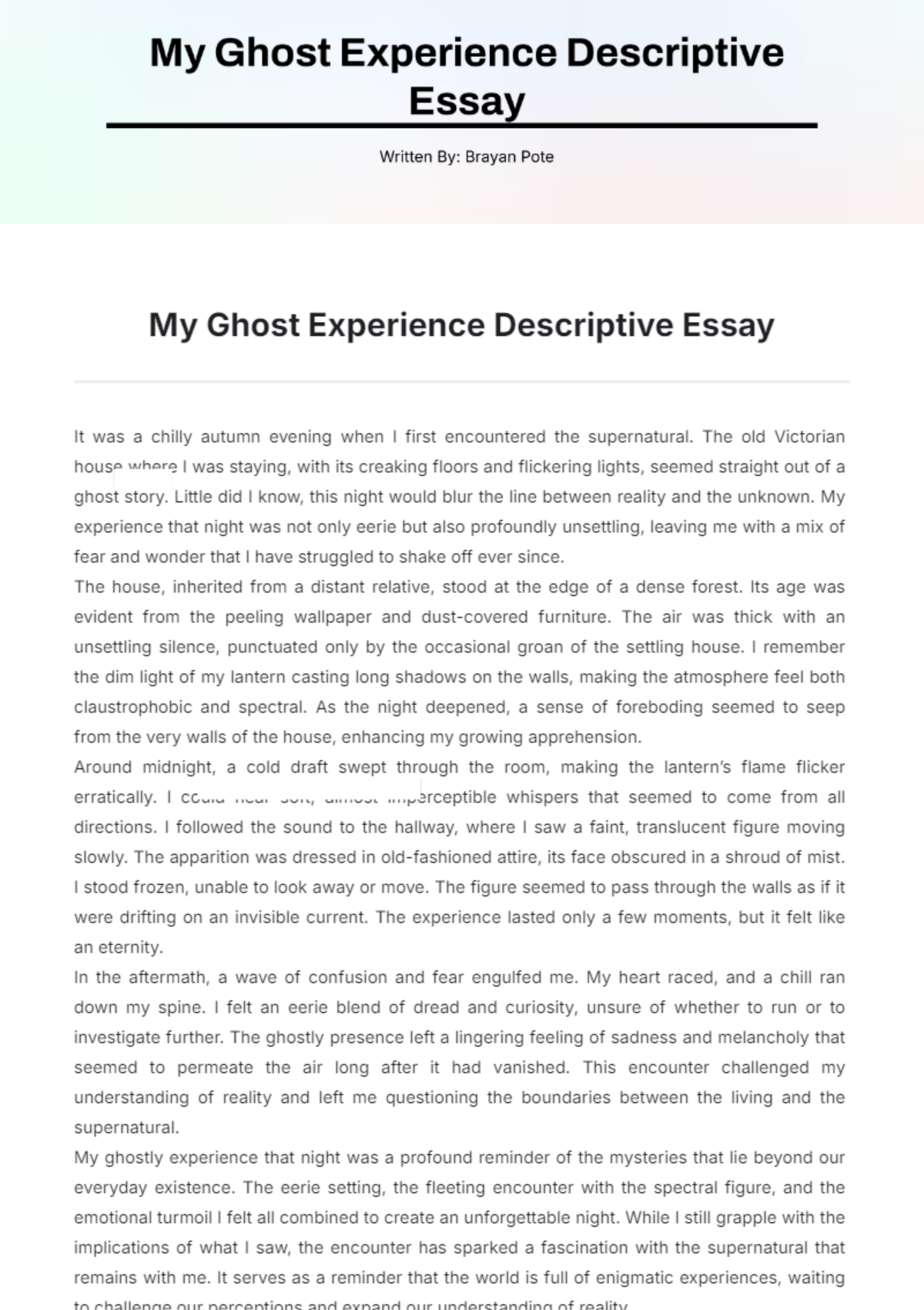Classwork Paper for Academic Essay
Written By: [Your Name]
The Role of Technology in Modern Education
Introduction
Technology has revolutionized nearly every aspect of human life, and education is no exception. The integration of technology in educational settings has transformed how students learn, teachers teach, and institutions operate. This essay explores the role of technology in modern education, emphasizing its impact on accessibility, personalized learning, student engagement, teacher-student collaboration, and the development of essential 21st-century skills.
1. Enhanced Accessibility to Education
Technology has significantly expanded access to education, breaking down geographical and socioeconomic barriers. Online learning platforms, such as Massive Open Online Courses (MOOCs), provide students worldwide with access to high-quality education. These platforms offer courses from prestigious universities, making education accessible to individuals who might not have the opportunity to attend traditional institutions. Moreover, assistive technologies, such as screen readers and voice recognition software, have made education more inclusive for students with disabilities, ensuring that all learners have the tools they need to succeed.
2. Personalized Learning Experiences
One of the most profound impacts of technology in education is the ability to tailor learning experiences to individual needs. Adaptive learning technologies analyze students' performance and learning styles to provide customized instruction. This personalization helps students learn at their own pace, reinforcing concepts they struggle with while allowing them to move ahead in areas where they excel. Such an approach not only improves academic outcomes but also fosters a love of learning by making education more relevant and engaging for each student.
3. Increased Student Engagement
Technology has the potential to make learning more interactive and engaging. Tools such as educational games, simulations, and virtual reality (VR) experiences immerse students in their learning environment, making abstract concepts more tangible and easier to understand. For example, VR can transport students to historical events or scientific environments that would otherwise be inaccessible. Additionally, multimedia presentations and interactive whiteboards make lessons more dynamic, catering to various learning preferences and helping maintain students' interest.
4. Improved Teacher-Student Collaboration
Technology facilitates better communication and collaboration between teachers and students. Learning management systems (LMS) like Blackboard and Google Classroom enable teachers to organize course materials, assignments, and assessments in a centralized platform that students can access anytime. These systems also allow for real-time feedback, enabling teachers to provide immediate support when students encounter difficulties. Furthermore, communication tools like email, video conferencing, and discussion forums encourage ongoing dialogue between teachers and students, promoting a collaborative learning environment.
5. Development of 21st-Century Skills
Incorporating technology into education is essential for preparing students for the demands of the 21st-century workforce. Critical thinking, problem solving, digital literacy, and collaboration are skills that students develop through technology-enhanced learning experiences. For instance, projects that require students to use digital tools for research, content creation, and presentation foster these skills, making students more competitive in the global job market. Moreover, familiarity with technology is crucial as nearly every industry now relies on digital tools and platforms, making technological proficiency a vital component of modern education.
Conclusion
Technology plays a crucial role in modern education, offering numerous benefits that enhance the learning experience. By increasing accessibility, enabling personalized learning, boosting student engagement, fostering teacher-student collaboration, and equipping students with essential 21st-century skills, technology has become an indispensable tool in the educational landscape. As technology continues to evolve, its integration into education will likely deepen, further transforming how we teach and learn. Educators and institutions must embrace these technological advancements to ensure that students are well-prepared for the future.




